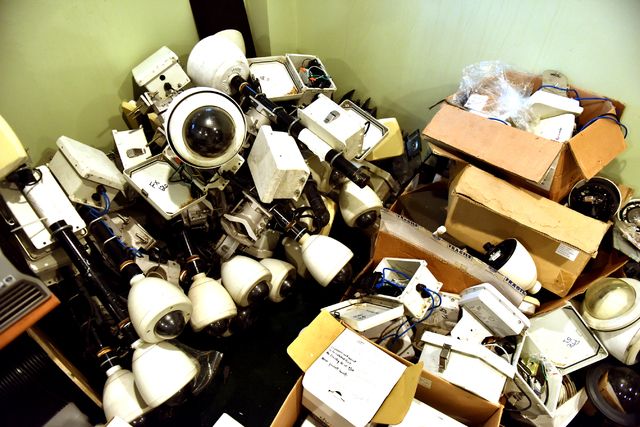Click here to subscribe today or Login.
Before sinking more money into Wilkes-Barre’s camera surveillance system, someone in authority needs to offer proof that the multimillion-dollar setup actually catches criminals.
Little evidence has been publicly offered of the program’s effectiveness since the Hawkeye Security System cameras went online in 2010. If no sizable arrest figures are forthcoming, scrap the thing.
Once ballyhooed as a crime-fighting tool – capable of both capturing images of bad guys in the act, as well as deterring people from doing dirty deeds in the first place – the system today offers about as much protection as a miniature poodle. There might be bark left in it, but no bite.
Lots of the cameras and related equipment no longer function. A Times Leader reporter and photographer recently documented a pile of the system’s parts, inoperable, gathering dust at police headquarters. Staffers no longer work around the clock to monitor images gathered by nearly 260 cameras posted at city sites including parking garages, schools and playgrounds.
Neither the school district nor the city’s Parking Authority, which once contributed fees for the camera system’s operation, continue to pay toward its upkeep.
Mayor Tony George’s administration has asked a consultant to provide an estimate of what it would cost to restore the system to a more useful level.
“The concept works. The camera system doesn’t work,” George recently said.
Under the prior administration of Mayor Tom Leighton, the city used more than $3.6 million in grants to create the system. The project seemed driven by a desire to address public perceptions about safety in Wilkes-Barre’s downtown.
One year after its startup, Hawkeye was hailed by Leighton as “an effective weapon.” He called a press conference during which he referred to the system as a “model for other cities to copy.”
Real-time video supplied by the cameras did allow city police officers to come to the aid of a fellow officer under attack, according to authorities. They also credited the system for assisting in many investigations and arrests, including the roundup of 22 people on drug-related charges for allegedly peddling their product near Public Square.
Specifics, however, were always hard to come by. Then-police Chief Gerard Dessoye said he didn’t keep statistics on how many arrests resulted from the cameras’ coverage.
By January 2013, certain people in the community raised doubts about the camera system’s abilities. They said it had failed to capture good images of suspects or vehicles in multiple incidents, including a high-profile, hit-and-run case.
Without definitive numbers today – on culprits caught versus the potential cost of system repairs and upgrades – it’s premature to say that the city should pull the plug on Hawkeye.
However, we’re reminded of what Dessoye told a Times Leader reporter in 2011. He credited the relatively new camera system for “additional arrests.” “But as far as the overall effectiveness of the system,” he said, “see me in five years. Then we will have a clear, definitive picture.”
Five years later, the picture essentially looks blank.





